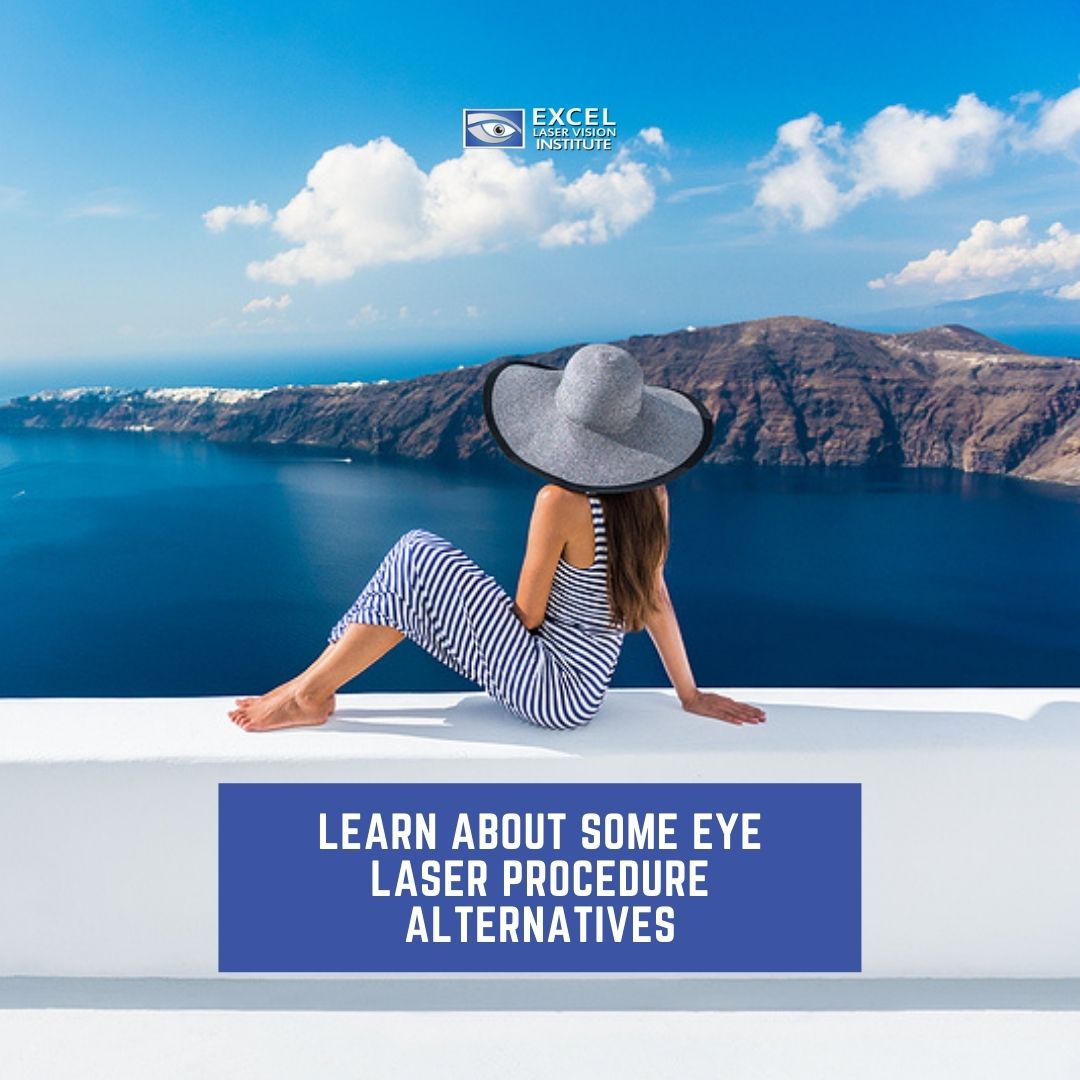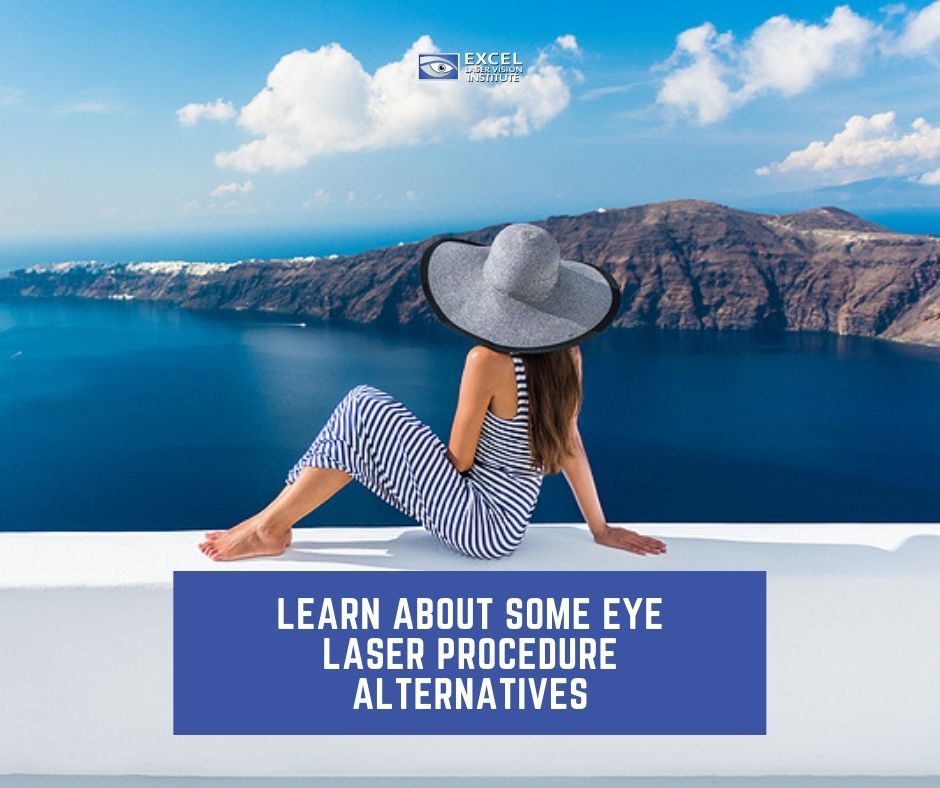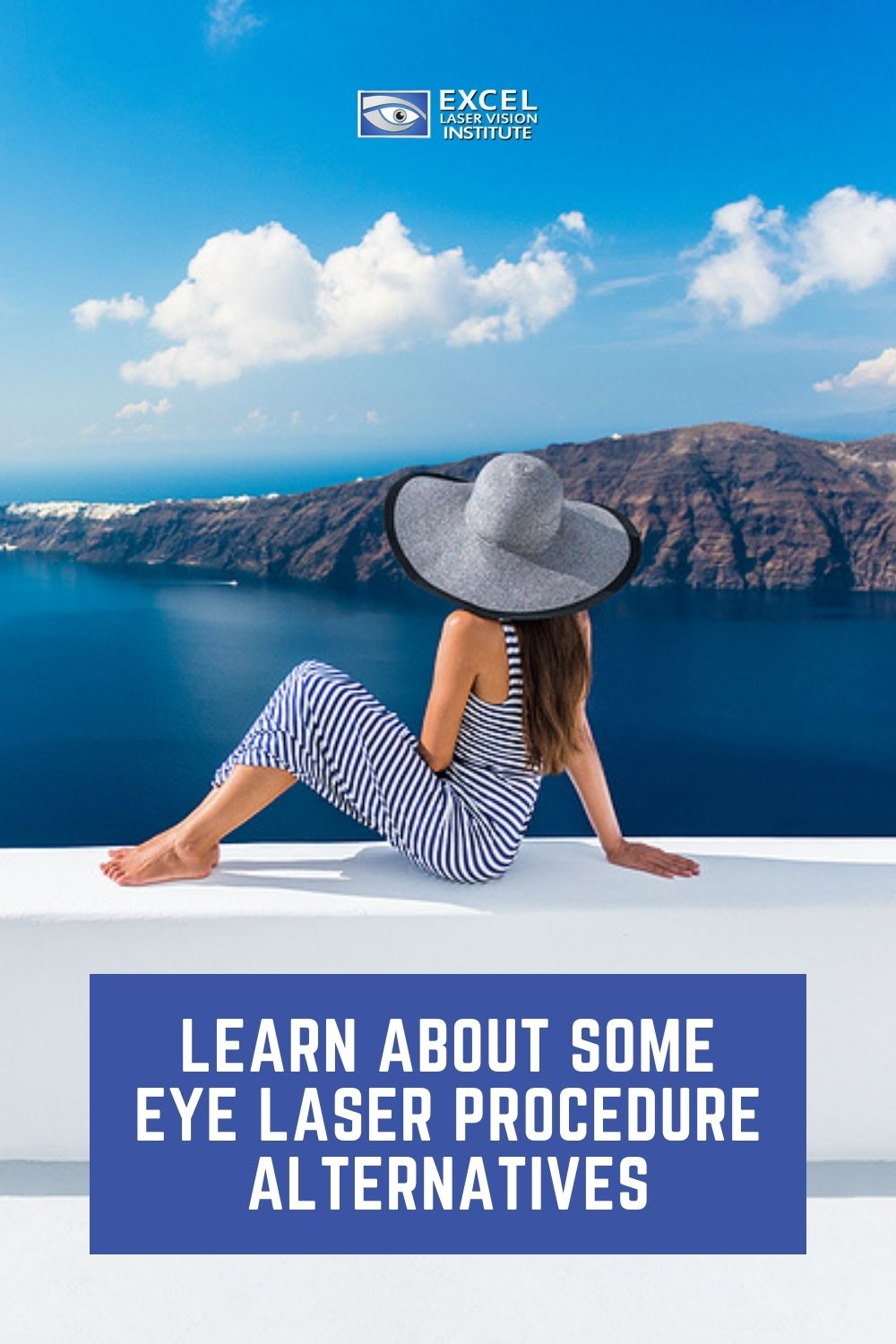
Doctor Moosa, an ophthalmologist and a LASIK surgeon in Los Angeles, will go out of his way to make certain he provides you with the best vision correction option. Without a doubt, LASIK eye surgery is probably the most popular choice, and we have the best LASIK surgeons who can professionally provide this procedure to patients; however, it may not be the best way to go for everyone.

So, the experienced LASIK team in Los Angeles wants to let you know about some LASIK eye surgery alternatives. Many of our highly skilled LASIK surgeons have hands-on experience with a vast range of vision correction procedures.
LASIK Alternatives
At the LASIK clinic of Excel Laser Vision Institute in Los Angeles, we provide many refractive options for vision correction. Depending on your individual requirements and goals, one of these vision correction procedures could be most suitable for you:
Visian ICL
Visian ICL is an Implantable Collamer® Lens that provides many advantages, especially for patients who cannot have LASIK surgery because they suffer from a high level of myopia (nearsightedness), thin corneas, or dry eye. Visian ICL does not cause Dry Eye Syndrome, which can be a worry when undergoing LASIK. Visian ICL also offers UV protection and has an excellent patient satisfaction rate.
Visian ICL is implanted behind the iris, in front of your eye’s natural lens during a 20–30-minute procedure. The patient can expect quick vision improvement with minimal recovery time, and the individual will not be able to see or feel it when it is inserted. Contrary to LASIK, which permanently alters the shape of the cornea, Visian ICL is an additive technology that can be removed if there is a need to do so. The best candidates for Visian ICL are aged 21 to 45 with moderate to severe nearsightedness (prescription between –3D and –20D) and a prescription that has been stable for at least one year. Also, Visian ICL can treat astigmatism (1.0D and 4.0D).
LASEK
LASEK, or(laser-assisted subepithelial keratomileusis) surgery, is different from its LASIK sibling. LASIK focuses on corneal sculpting, whereas LASEK concentrates on the cornea’s very top layer or epithelium. An instrument is used to create a flap of corneal tissue; then, the eye surgeon applies an alcohol solution to loosen epithelial cells. After that, the cornea itself is sculpted. Healing normally takes around four days.
PRK
Photo-Refractive Keratectomy (PRK) is a laser vision correction surgery that involves removing the outer layer of the eye’s surface to avoid an incision in the cornea. Like LASIK, a laser is then used to vaporize the cornea to correct refractive errors. Visual improvement and recovery time may take slightly longer than LASIK eye surgery or Visian ICL lens implantation procedures, but it is still an excellent option for many people.
PRK may be an option for patients who cannot have LASIK surgery because they have thin corneas but can only correct nearsightedness with a prescription up to -8 D. The most suitable candidates for PRK are over 18 and have had a stable prescription for at least one year.
CLE
Clear Lens Exchange (CLE) is a vision correction surgery that involves an experienced eye surgeon replacing the eye’s natural lens with an artificial intraocular lens (IOL), just like cataract surgery. CLE can correct a vast amount of vision errors depending on the type of IOL that is selected.
If this procedure sounds familiar to you, it is because it is very similar to cataract surgery and is usually performed on one eye at a time.
Wavefront-guided LASIK
During a traditional LASIK procedure, the laser is programmed to carve the cornea based on the patient’s vision correction prescription, focusing on 20/20 vision. Unlike wavefront-guided LASIK, which has the laser programmed with the patient’s wavefront data, which creates a three-dimensional model of the existing cornea, the laser can sculpt it more precisely for vision correction.
This three-dimensional map looks very similar to a mountain range, allowing technology to correct smaller abnormalities on the surface, getting better correction than just a prescription number for glasses or contact lenses. Also, this procedure lowers the risk of side effects such as problems with night vision or light sensitivity.
EpiLASIK
Just like LASEK, this procedure concentrates on the epithelial tissue of the cornea. A special microkeratome, called the epi-keratome, separates a thin sheet of epithelial tissue from the cornea and is lifted to one side. After it is treated, it may be replaced or removed, depending on the requirements of the reshaped cornea to create perfect vision.
Conductive keratoplasty (CK)
It is a non-invasive procedure that precisely treats mild to moderate farsightedness in patients over the age of 40, usually when presbyopia develops. This utilizes thermal refractions created to radiofrequency (RF) energy rather than a laser, applying heat to the cornea to change it. Instead of removing layers of cells, the RF emissions make the peripheral areas of the cornea contract, tightening it like you would a belt, which increases the curvature of the cornea itself. Also, CK is used to create monovision, or blended vision, which improves a person’s ability to focus on all depths. One eye’s near vision is enhanced while the other eye is set to far vision. For the majority of people, farsightedness will return as the eyes continue to age.
How To Choose The Right Vision Correction Surgery
There are many elements and influences to think about when deciding on a vision correction procedure. Your eye doctor is the best person to make a suitable choice for you based on your prescription, lifestyle, and the advantages you are looking for. At Excel Laser Vision Institute in Orange County, our advanced eye care team has the experience that is vital when trying to find the right procedure for you. Call Excel Laser Vision Institute at (888) 957-3255 or visit our website to learn more about LASIK alternatives or to schedule an appointment.




